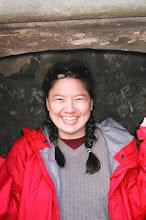DIY Ant Sudoku
 Make your own picture sudoku with photos from flickr. I just made the one above using photos from JochenB's lovely gallery of ant portraits. Link via Make
Make your own picture sudoku with photos from flickr. I just made the one above using photos from JochenB's lovely gallery of ant portraits. Link via Make
In which I will be keeping track (for my own benefit) of my daily progress in the identification of the ant fauna of Tiputini Biodiversity Station in Ecuador, the analysis of that data, and the pursuit of my PhD. And (for the benefit of everyone else) I hope to provide helpful information on ants, taxonomy, database management, identification, and other assorted endeavors. Cheers
 Make your own picture sudoku with photos from flickr. I just made the one above using photos from JochenB's lovely gallery of ant portraits. Link via Make
Make your own picture sudoku with photos from flickr. I just made the one above using photos from JochenB's lovely gallery of ant portraits. Link via Make
Posted by
Kari T. Ryder Wilkie
at
7:17 PM
0
comments
![]()
I have actually been working lately, although I haven't written about it much. Mostly I have been writing a paper on my subterranean probe work, and preparing it for submission. I have revised and revised and revised and revised until I thought I could revise no more, and then I revised some more. I can't even look at this thing anymore. Unfortunately, it was just rejected by the first journal we tried. So sad. Now I fear I must revise some more for a different journal. In order to procrastinate, I present to my readers a list of silly scientific journals:
Posted by
Kari T. Ryder Wilkie
at
5:24 PM
0
comments
![]()
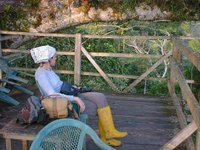 Myrmecologist and filmmaker Amy Mertl has just posted a new video to her webpage on Yasuni National Park and the Tiputini Biodiversity Station in Ecuador. It is "a short documentary on the incredibly diverse Yasuni National Park in Amazonian Ecuador and the threats it faces from the construction of oil roads. Includes interviews with Kelly Swing and Jaime Guerra." Check it out.
Myrmecologist and filmmaker Amy Mertl has just posted a new video to her webpage on Yasuni National Park and the Tiputini Biodiversity Station in Ecuador. It is "a short documentary on the incredibly diverse Yasuni National Park in Amazonian Ecuador and the threats it faces from the construction of oil roads. Includes interviews with Kelly Swing and Jaime Guerra." Check it out.
I enjoyed watching this video immensely. It made me really nostalgic for the station. I realized I haven't been back (or anywhere in the field) since 2003. I really miss it! Tiputini Biodiversity Station is such an amazing place. I've been inspired to troll the net for various links to it and I encourage all researchers to consider it as a possible field site. And let me know of other links, too! Tiputini Links:
Tiputini Links:
Wikipedia entry
Official TBS website
Video clips from students on the tropical ecology program at Tiputini.
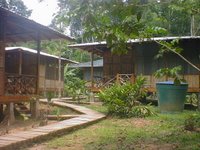 Yasuni Rainforest Campaign -- "The Most Biologically diverse place on earth." Current news stories, information about the indigenous Huaorani, letters of support from organizations and individuals (including EO Wilson and Jane Goodall), and diversity maps.
Yasuni Rainforest Campaign -- "The Most Biologically diverse place on earth." Current news stories, information about the indigenous Huaorani, letters of support from organizations and individuals (including EO Wilson and Jane Goodall), and diversity maps. Ants of Tiputini
Ants of TiputiniUnderstanding biophysical and landscape controls on spatial patterns of tree diversity -- a paper using Tiputini as a field site
A personal essay on the experience of being at Tiputini, with a cameo by Ben Rinehart, bat researcher extraordinaire and fellow BU grad student. A story about Ben: One day I was walking towards the elevator and bumped into Ben, garbed in field gear, net in hand, who grumbled: "I bet you don't have to go out when some lady finds an ant in her garage." Struth.
Posted by
Kari T. Ryder Wilkie
at
4:17 PM
0
comments
![]()


 Look at these fabulous designs from the even more fabulously named store Timorous Beasties!
Look at these fabulous designs from the even more fabulously named store Timorous Beasties!
(via BoingBoing via CribCandy).
Posted by
Kari T. Ryder Wilkie
at
8:00 AM
0
comments
![]()
 E. O. Wilson's new book, The Creation, is an attempt to get two groups of disparate folks -- scientists and evangelical Christians -- together on the one issue that Wilson believes they can agree on: saving life on earth.
E. O. Wilson's new book, The Creation, is an attempt to get two groups of disparate folks -- scientists and evangelical Christians -- together on the one issue that Wilson believes they can agree on: saving life on earth.
As Wilson says, science and religion are "the two most powerful forces in the world today." What wonders could be accomplished if they were on the same side?
Here is a link to an article in the Washington Post.
And another link to an interview with Wilson and Dr. Gerald Durley, Pastor of the Providence Missionary Baptist Church of Atlanta, Georgia, on NPR.
Posted by
Kari T. Ryder Wilkie
at
3:15 PM
0
comments
![]()
 Drawing by Christine Parent
Drawing by Christine Parent
Posted by
Kari T. Ryder Wilkie
at
1:05 PM
0
comments
![]()
"Bandai is set to release Ant's Life Studio this November in Japan, a virtual ant farm simulator that could very well become the next Tamagotchi. It's apparently being aimed at the hordes of Japanese men who do nothing but slave away at a tiny desk all day, working until their eyes fall out. Maybe Bandai's making some sort of social justice metaphor here, but, then again, they could just be wanting to cash in on a fun idea.Like real-world ant farms, people simply watch the virtual ants go on with their lives, moving dirt, making tunnels, getting nervous when approaching the queen to ask for a favor, etc. Up to 100 different nests can be built by the ants, ensuring that no matter how dull and meaningless your work day is, you can always watch your pets toil away."
Bandai's Ant's Life Studio via Tokyo Times via gizmodo
Posted by
Kari T. Ryder Wilkie
at
10:28 PM
1 comments
![]()
Posted by
Kari T. Ryder Wilkie
at
3:44 PM
0
comments
![]()
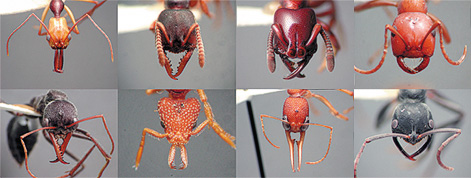
I just found this very nice site authored by Chris Schmidt on the morphological and functional diversity of ant mandibles. Awesome photos and very clear explanations. It is a treehouse on the Tree of Life. Check it out.
Update: Whoops! I forgot to include the link. Check it out here.
Posted by
Kari T. Ryder Wilkie
at
6:34 PM
4
comments
![]()
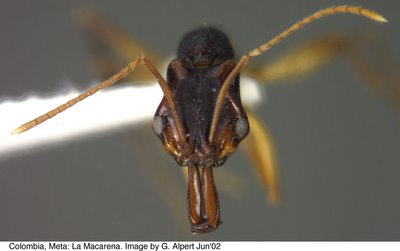
Today I rechecked all of my Anochetus specimens. Why? Because I was browsing the Ants of Costa Rica web page and it said that Anochetus bispinosus was extremely rare and that in all the intensive collecting that had been done there they had only collected 3 workers from a single tree. And I have 4 specimens, so I started to doubt myself. Well, I have rechecked all of them and I am confident that all of my original identifications are correct, including the A. bispinosus specimens. It's actually a fairly easy key to deal with, and according to AntWeb, it has also been found in Brazil and Colombia, so it isn't crazy to find it in Ecuador. My four specimens (all workers) were collected by canopy fogging in 2 different trees fairly far removed from each other. I don't have pictures yet but they basically look exactly like the photos on the Ants of Costa Rica page.
More information:
From Bill and Emma Mackay's site -- a key to neotropical Anochetus can be found here.
From the Hymenoptera On-Line Database: Brown, W. L. 1978. Contributions toward a reclassification of the Formicidae. Part VI. Ponerinae, tribe Ponerini, subtribe Odontomachiti. Section B. Genus Anochetus and bibliography. Stud. Entomol. (N.S.) 20: 549-652. Browse or download entire file (5.3M) 
From Jack Longino's Ants of Costa Rica site -- a key to Costa Rican species of Anochetus.
From the Hymenoptera Name Server -- a list of valid and invalid names including some original sources.
From AntWeb -- lots of Anochetus photos and specimen collection data.
From the MCZ Type Database -- a list of specimens at Harvard's Ant Room with lots o' photos. Just select "Hymenoptera" for Order and type in "Anochetus" under name.
From ponerine.org -- a really nifty list of Anochetus species which can be sorted taxonomically, alphabetically, by region, or by extant/extinct(ness). Awesome.
Posted by
Kari T. Ryder Wilkie
at
2:43 PM
0
comments
![]()
